- FTTH ã 10G XGSPON >SFP Transceivers >2.5G SFP 1310nm 10km
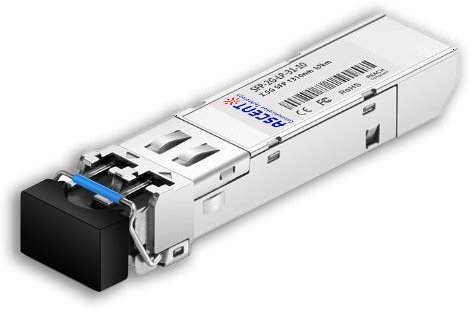
2.5G SFP 1310nm 10km
Ascentãs 2.5 Gb/s 1310 nm Small Form-Factor Pluggable (SFP) transceiver is a flexible solution as an interface for switches, routers, servers, and other optical links. The transceiver consists of five sections: the LD driver, the limiting amplifier, the digital diagnostics monitor, the 1310 nm DFB laser, and the PIN photo-detector. The module can carry data links up to 20 km in a 9/125 ôçm single mode fiber, and is compatible with the SFP Multi- Sourcing Agreement (MSA). The optical output of the transceiver can be disabled using a high-level TTL logic TX disable input, and the system can also be disabled via I2C. TX Fault is provided to indicate any degradation of the laser. A loss of signal (LOS) output is provided to indicate if there are any losses in the input optical signal of the receiver or if there are any problems with the link status of partner devices. The system can also obtain the LOS (or Link) / Disable / Fault information using an I2C register access.
ôñ Operating Data Rate up to 2.5Gbps
ôñ 1310nm DFB Laser Transmitter
ôñ 2.5Gb/s PIN-TIA photodiode receiver
ôñ 20km with 9/125ôçm SMF
ôñ Single 3.3V Power Supply
ôñ Hot-Pluggable SFP Footprint Duplex LC Connector Interface
ôñ Operating Temperature 0ô¯C ~70ô¯C
ôñ Compliant with SFF-8472
ôñ Compliant with MSA SFP Specification
ôñ Class 1 FDA and IEC60825-1 Laser Safety Compliant
Absolute Maximum Ratings
Parameter | Symbol | Min. | Max. | Unit |
Storage Temperature | Ts | -40 | +85 | ô¯C |
Maximum Supply Voltage | Vcc | -0.5 | 3.6 | V |
Operating Relative Humidity | RH | 5 | 85 | % |
Parameter | Symbol | Min. | Typ. | Max. | Unit |
Operating Case Temperature | Tc | 0 | 70 | ô¯C | |
Power Supply Voltage | Vcc | 3.15 | 3.3 | 3.45 | V |
Power Supply Current | Icc | 300 | mA |
Optical Characteristics
Parameter | Symbol | Min. | Typ. | Max. | Unit |
9ôçm Core Diameter SMF | L | 20 | km | ||
Data Rate | 2.5 | Gbps | |||
Power Budget | 13 | dB | |||
Transmitter | |||||
Center Wavelength | ö£C | 1260 | 1310 | 1360 | nm |
Spectral Width (-20dB) | ãö£ | 1 | nm | ||
Side Mode Suppression Ratio | SMSR | 30 | dB | ||
Average Output Power*(Note1) | Pout | -5 | 0 | dBm | |
Extinction Ratio*(Note2) | ER | 8.2 | dB | ||
Rise/Fall Time (20% ~ 80%) | tr/tf | 150 | ps | ||
Total Jitter*(Note2) | TJ | 0.07 | UI | ||
Output Optical Eye | ITU-T G.957 Compliant | ||||
Pout@TX Disable Asserted | Pout | -45 | dBm | ||
Receiver | |||||
Center Wavelength | ö£C | 1260 | 1600 | nm | |
Receiver Sensitivity*(Note3) | Pmin | -18 | dBm | ||
Receiver Overload | Pmax | -3 | dBm | ||
LOS De-Assert | LOSD | -19 | dBm | ||
LOS Assert | LOSA | -35 | dBm | ||
LOS Hysteresis | 0.5 | dB | |||
Notes:
1. Output is coupled into a 9/125um SMF.
2. Filtered, measured with a PRBS 223-1 test pattern @2.5Gbps.
3. Minimum average optical power is measured at BER less than 1E-12, with 223-1 PRBS and ER=8.2dB
Electrical Characteristics
Parameter | Symbol | Min. | Typ. | Max. | Unit | Note | |
Transmitter | |||||||
LVPECL Inputs (Differential) | Vin | 400 | 1600 | mVpp | AC Coupled Inputs*(Note1) | ||
Input Impedance (Differential) | Zin | 85 | 100 | 115 | ohms | Rin > 100 kohms @ DC | |
TX_Dis | Disable | 2 | Vcc+0.3 |
V | |||
Enable | 0 | 0.8 | |||||
TX_FAULT | Fault | 2 | Vcc+0.3 |
V | |||
Normal | 0 | 0.5 | |||||
Receiver | |||||||
LVPECL Outputs (Differential) | Vout | 400 | 800 | 1200 | mVpp | AC Coupled Outputs*(Note1) | |
Output Impedance (Differential) | Zout | 85 | 100 | 115 | ohms | ||
TX_Disable Assert Time | t_off | 10 | us | ||||
RX_LOS | LOS | 2 | Vcc+0.3 | ||||
Normal | 0 | 0.8 | |||||
MOD_DEF (0.2) | VoH | 2.5 | V | With Serial ID | |||
VoL | 0 | 0.5 | |||||
Note:
1. LVPECL logic, internally AC coupled.
Digital Diagnostic Functions
Parameter | Range | Unit | Accuracy | Calibration |
Temperature | 0 to 70 | ô¯C | ôÝ3ô¯C | Internal / External |
Voltage | 3.0 to 3.6 | V | ôÝ3% | Internal / External |
Bias Current | 0 to 70 | mA | ôÝ10% | Internal / External |
TX Power | -5 to 0 | dBm | ôÝ3dB | Internal / External |
RX Power | -18 to -3 | dBm | ôÝ3dB | Internal / External |
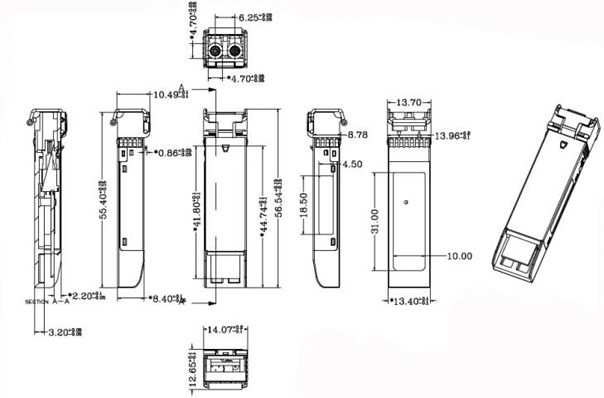
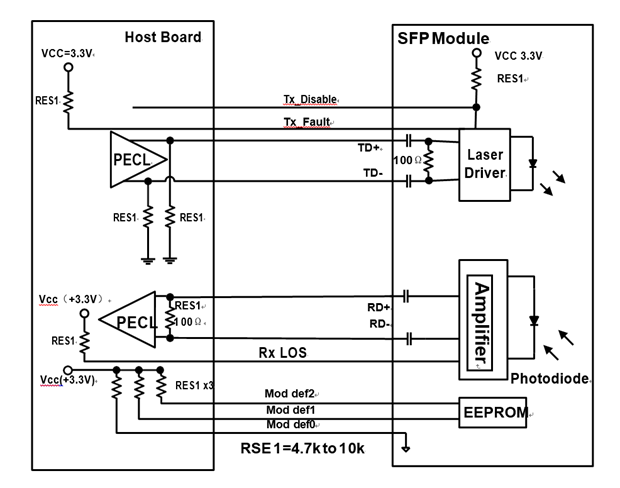

2.5G SFP CWDM 40 km
SFP-2G-LP-CXX-40 2.5 Gbps CWDM Single-mode SFP Transceiver
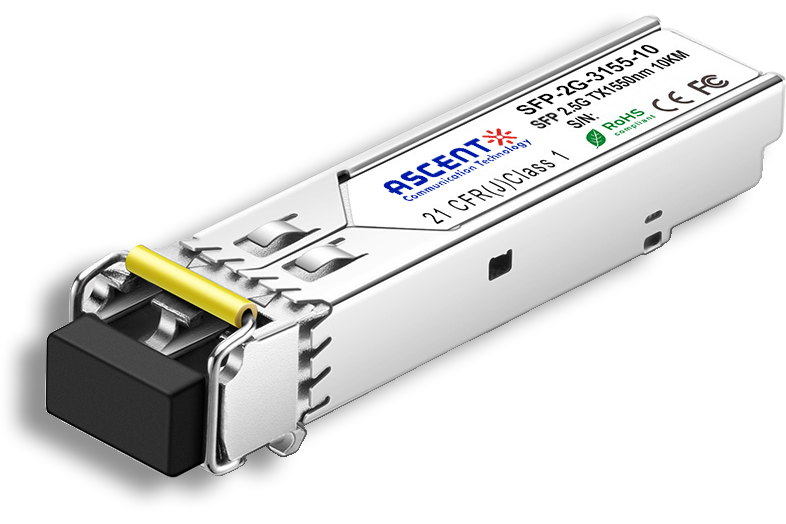
2.5G SFP BiDi 10 km
SFP-2G-LP-3155-10 2.5 Gb/s BiDi Single-mode SFP Transceiver

2.5G SFP 1310 nm 2 km
SFP-2G-LP-31-2K 2.5 Gb/s 1310 nm Single-mode SFP Transceiver

1.25G SFP EZX 1550 nm 120 km
SFP-AGLP-51-120 1.25Gb/s 1550nm Single-mode SFP Transceiver

1.25G SFP ZX 1550 nm 80 km
SFP-AG-LP-51-80 1.25 Gb/s 1550 nm Single-Mode SFP Transceiver

1.25G SFP EX 1550 nm 40 km
SFP-AG-LP-51-40 1.25 Gbps 1550 nm Single-mode SFP Transceiver
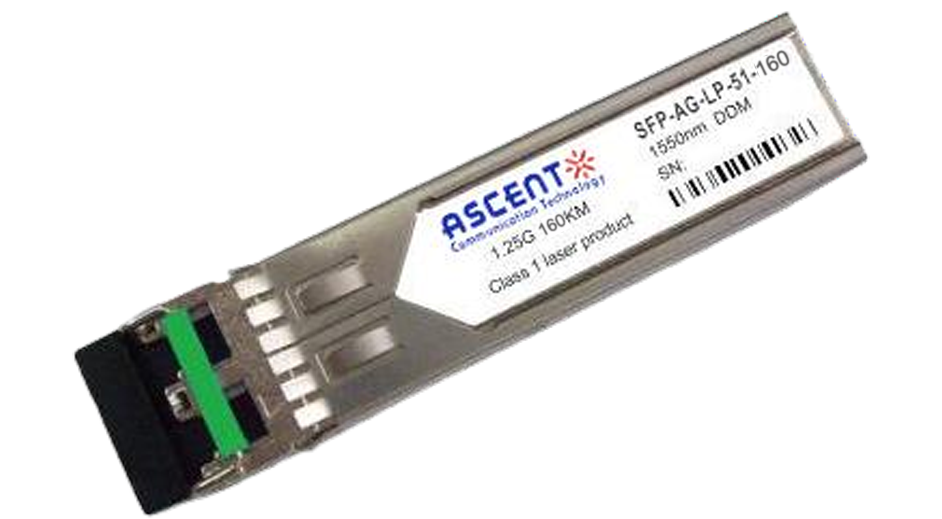
1.25G SFP 1550 nm 160 km
1.25 Gb/s SFP 1550nm 160km Transceiver

1.25G SFP EX 1310 nm 40 km
SFP-AG-LP-31-40 1.25 Gb/s 1310 nm Single-mode SFP Transceiver

1.25G SFP 1310 nm 20 km
SFPP-AG-LP-31-20 1.25 Gb/s 1310 nm Single-Mode SFP Transceiver

1.25G SFP 1310 nm 10 km
SFPP-AG-LP-31-10 1.25 Gb/s 1310 nm Single-Mode SFP Transceiver

1.25G SFP SR 850 nm 550 m
SFP-AG-LP-85-05 1.25Gb/s 850 nm Multi-Mode SFP Transceiver
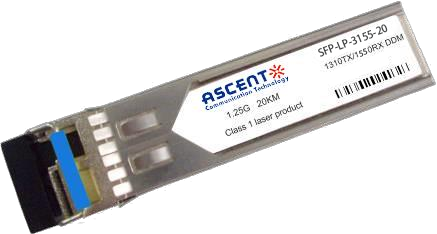
1.25G SFP BX 3155 20 km
SFP BIDI 1.25G 1310/1550 nm 20 km DDM
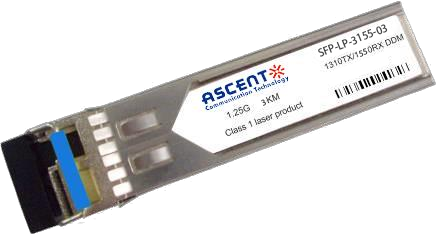
1.25G SFP BX 3155 3 km
SFP BIDI 1.25G 1310/1550 nm 3 km

1.25G SFP BX 4950 120 km
SFP-AGLP4955-120 SFP BIDI 1.25G 1490/1550 nm 120 km DDM

1.25G SFP BX 4950 80 km
SFP-AGLP-4955-80 SFP BIDI 1.25G 1490/1550 nm 80 km DDM
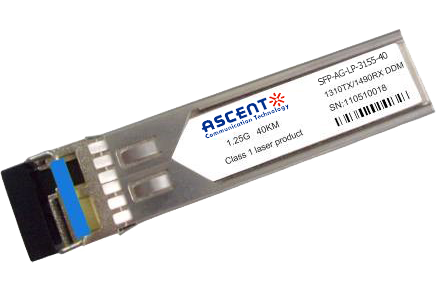
1.25G SFP BX 3150 40 km
SFP-AGLP-3155-40 SFP BIDI 1.25G 1310/1550 nm 40 km DDM
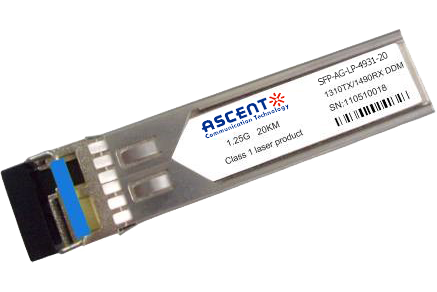
1.25G SFP BX 3149 20 km
SFP-AGLP-3149-20 SFP BIDI 1.25G 1310/1490 nm 20 km DDM

1.25G SFP CWDM 4931 40 km
SFP-AGLP-4931-40 SFP Plug-in, 1.25Gbps, 40km, BIDI, TX=1490nm, RX=1310nm, LC/PC Blue

1.25G SFP CWDM 4931 20 km
SFP-AGSP-4931-20 SFP Plug-in, 1.25Gbps, 20km, BIDI, TX=1490nm, RX=1310nm, SC/PC Blue
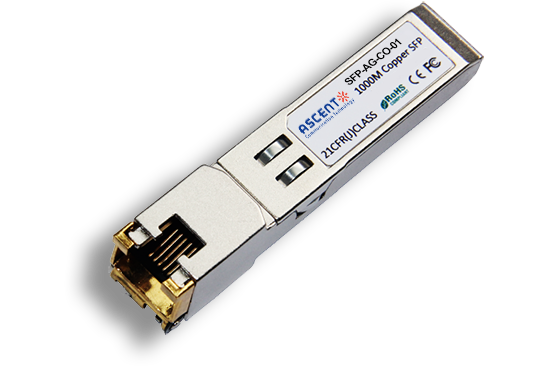
1000M Copper SFP
SFP-AG-CO-01 1000M Copper SFP Transceiver

10/100/1000M Copper SFP
SFP-AG-CO-02 10/100/1000M Copper SFP Transceiver
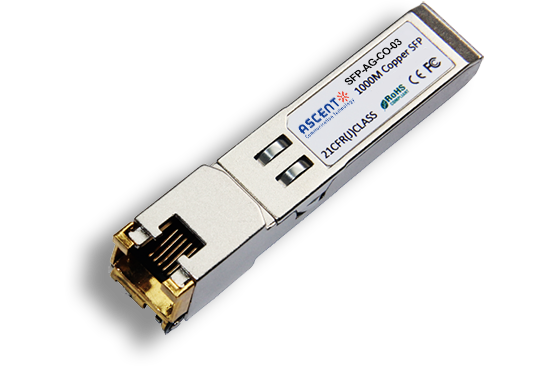
1000M Copper SFP w/ Auto-Negotiation
SFP-AG-CO-03 1000M Auto Adapt Copper SFP Transceiver
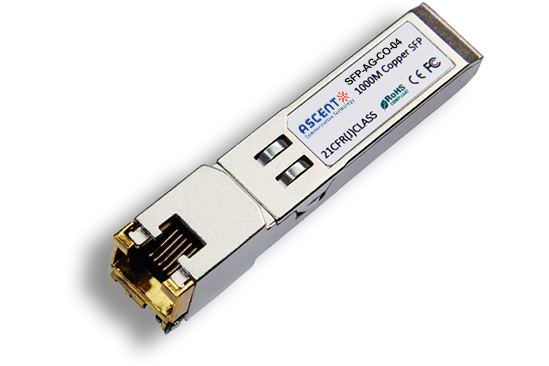
10/100/1000M Copper SFP w/ Link Indicator
SFP-AG-CO-04 10/100/1000M Copper SFP Transceiver w/ Link Indicator
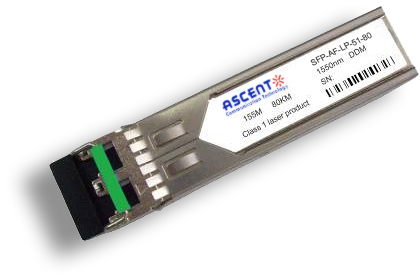
155M SFP 1550 nm 80 km
SFP-AF-LP-51-80 155 Mb/s 1550ô nm Single?Mode SFP Transceiver

100M SFP BX 4931 20 km
SFP-AF-LP-XXXX-20-AN SFP Plug-in, 100Mbps, 20km, BIDI, TX=1490nm, RX=1310nm, LC/PC blue

155M SFP OC3 1310nm 15 km
SFP_ONS-SI-155-I1 SFP Plug-in, OC3 155Mbps 1310nm Single-mode SFP Optical Transceiver, 15km, LC
White Paper
Press Releases
Briefings 1
Briefings 2
Videos, etc.
QRG
Manual1
Manual2
Get in touch with our experts
Feedback